The good old days of bigger, faster, stronger are long gone. We know better now. Times have changed. The game of strength has new rules. It is not just about strength. It is about strength AND speed. It is about power.
Force and Power
Swinging a 32kg kettlebell is challenging, but we can all agree that swinging a 48kg kettlebell is much harder. Swinging a 48kg kettlebell not only takes more work and effort but requires more power. It is hard to measure power. Simply put, power is a measure of effort. It takes a great deal of effort to swing a 48kg kettlebell, but it takes a much greater effort to swing a 32kg kettlebell fast. Power is the product of force and velocity.
P = W∙t-1 → F∙d∙t-1 → F∙v
P = power (W) | t = time (s) | W = work (J) | F = force (N) | d = distance (m) | v = velocity (m/sec)
Force is measured in Newtons (N) and can be calculated with the simple formula: mass times acceleration. This is Newton’s second law of mechanics (F=m∙a). To determine the amount of force needed to move an object, you multiply its weight by 9.8 m/s. For example, to move a kettlebell weighing 48kg, you must apply over 480N of force against the ground. As a rule of thumb, the more force you can apply against the ground, the faster that kettlebell will move. Greater force means greater acceleration. Greater force is, indeed, necessary to generate more power.
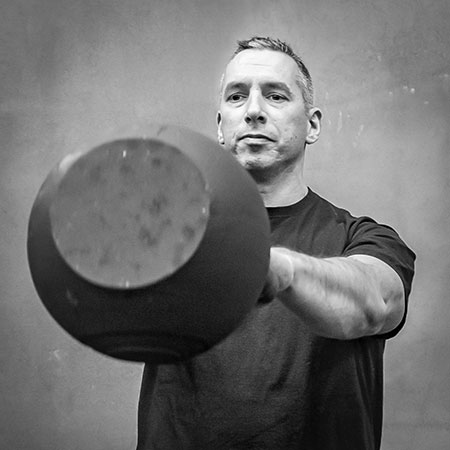
Force and Velocity
The more power the better. It is very unlikely someone would ever question such a statement. The same cannot be said about velocity.
Let’s take running, for example. Looking at running mechanics makes our life easier mostly because there are a great number of studies that have looked at variables such as stride frequency, ground contact time, and the rate of force development in elite level sprinters. Let’s start by stating the obvious. The fastest athlete wins. Plain and simple. Running velocity is the product of stride length and frequency. Stride length is decided by the anthropometrics of an athlete, whereas stride frequency depends on technique. Stride frequency also depends on the force an athlete can generate when striking the ground. In theory, a longer ground contact time would allow for more force to be generated against the ground. However, a longer ground contact time would also decrease the number of steps an athlete could take over a given distance thus decreasing stride frequency. It is not just about how hard an athlete can push off the ground with every stride, but how hard and how fast an athlete strikes the ground while accelerating toward the finish line. More force being applied against the ground in a shorter amount of time means greater leg turnover and greater leg turnover means greater stride frequency. Greater stride frequency means greater velocity. Remember, the fastest athlete wins.

For a sprinter ground contact time is ideally somewhere between 120-140ms, a bit longer during the initial acceleration and somewhat shorter during the last 30-40m. The best sprinter can generate force in the upwards of 3000N in a little over 1/10th of a second. Truly remarkable. Now, let’s look at a kettlebell swing. We could swing a kettlebell fast, but it would probably have to be a smaller, lighter kettlebell than we are used to. Trying to swing a heavy kettlebell too slow, on the other hand, will make the weight feel even heavier than it is. It is all about finding that sweet spot. How fast is “fast enough” or how slow is “too slow” is not up for debate. It is physics.
Please note, this is not to say that swinging or pressing a heavier kettlebell is a bad idea. Grinds (as we call strength exercises at StrongFirst) are great. Heavy presses and squats are great. The likes of Dr. Carmelo Bosco, Dr. Keijo Hakkinen, and Professor Yury Verkhoshansky have long preached the importance of heavy lifting. Training heavy is important. Strength is important. It is just a matter of training with intent.
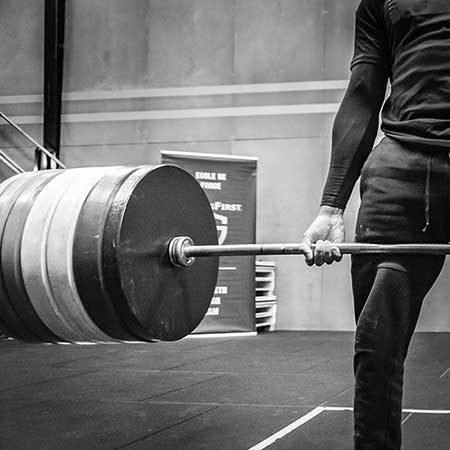
Lift Heavy with Intention
How heavy is too heavy? It is never too heavy. Does that sound familiar? That would be the right answer if strength was all that matters. As we’ve learned, that is not the case. A better alternative would be to lift heavy weights with greater intent—trying to move the weight faster and faster, repetition after repetition. Heavy weights above 80% of 1RM are going to move slow. Power peaks at 50% of 1RM at around 1m/s. For those who are very data-driven, on average 80% of 1RM moves slightly slower than 0.5m/s and velocity drops by roughly 0.1m/s every 5% increase in weight thereafter. That is assuming whoever is lifting is trying to move the weight as fast as possible which is not always the case. Training with intent means this: trying to move heavy weights as fast as possible, regardless of the actual velocity. This approach to heavy strength training became popular in the late 80s-early 90s with Dr. Fred Hatfield (1942-2017) also known as Dr. Squat. Dr. Hatfield named it “compensatory acceleration training” or CAT.
Developing Power and Strength
In the scientific community, CAT is more commonly referred to as “maximum intended concentric acceleration training.”1 This type of training has been studied extensively in both the field of physical therapy and sports science. In 1999, Jones and colleagues published an interesting study in the Journal of Strength and Conditioning Research.2 In the study, a group of 40 collegiate NCAA Division 1AA American football players underwent 14 weeks of upper body periodized resistance training. Athletes bench pressed heavy sets of 3-5 repetitions with two minutes of rest between sets. The experimental group performed sets with as much acceleration as possible during each repetition. Average vertical bar velocity declined as the load progressively increased, dropping from 0.6m/s during the lightest sets (75% 1RM) to 0.4m/s during the heaviest ones (90% 1RM). There was also a decline of approximately 40-60% in bar velocity from the first to the last repetition of each set. The control group trained without the intent of accelerating the bar.
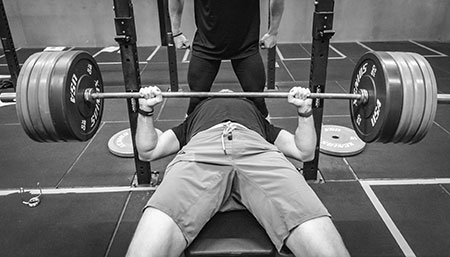
A series of tests performed at the end of the two training programs revealed a significant difference in training adaptation between the two groups. Each subject tested upper body strength in the bench press (1RM) and tested power with a seated medicine ball throw. A plyometric pushup was also performed, using force plates to look at average power output, amortization time, and peak force. The experimental group showed significantly more improvement with an 8.6% increase in upper body strength and a 9.4% increase in power. In the control group upper body strength only increased by 3.8% and power by 2.8%.
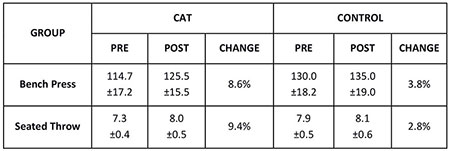
Training with intended maximal concentric acceleration not only increased strength and power but also improved the mechanics of muscle contraction. In the experimental group, the length of the amortization phase during a plyometric pushup, i.e., the rapid switch from eccentric to concentric work, decreased by nearly 50ms. A shorter amortization phase allowed for better use of the stretch-shortening cycle and greater push-off velocity. As expected, peak power output increased by 365W, which was three times more than the control group.
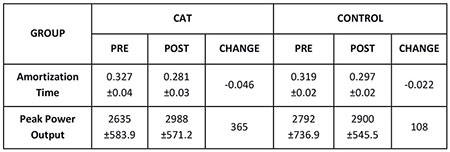
As a rule of thumb, heavy lifts should not exceed 20% of the total training volume and should be coupled with a variety of explosive exercises and plyometric drills.3 Whether the goal is to swing a heavier kettlebell or PR a deadlift, strength is and will always be king. However, lifting heavy is not enough to develop power. Whether you are approaching a loaded barbell or a heavy set of kettlebells for a double press or a front squat, lift with the intent of moving fast despite gravity fighting against you. If your ability to drive with intent during the concentric portion of the lift seems to be fading away, stop and rest. This will improve performance in all ballistic-type movements, including heavy swings and snatches. Don’t just lift heavy. Train with intent. Science does not lie.
StrongFirst resources for athletes and coaches:
References
1 González-Badillo, J. J., Rodríguez-Rosell, D., Sánchez-Medina, L., Gorostiaga, E. M., & Pareja-Blanco, F. (2014). Maximal intended velocity training induces greater gains in bench press performance than deliberately slower half-velocity training. European journal of sport science, 14(8), 772-781.
2 Jones, K., Hunter, G., Fleisig, G., Escamilla, R., & Lemak, L. (1999). The effects of compensatory acceleration on upper-body strength and power in collegiate football players. The Journal of Strength & Conditioning Research, 13(2), 99-105.
3 Adams, K., O’Shea, J. P., O’Shea, K. L., & Climstein, M. (1992). The effect of six weeks of squat, plyometric and squat-plyometric training on power production. Journal of applied sport science research, 6(1), 36-41.

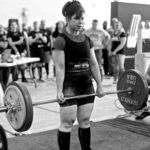
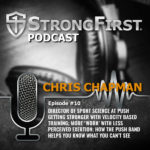
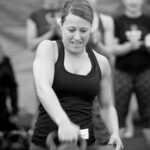
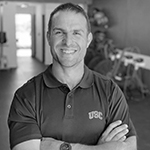




Interesting post.
My only concern about maximizing speed is it increases the chance of injury. Need to be really warmed up well before doing it.